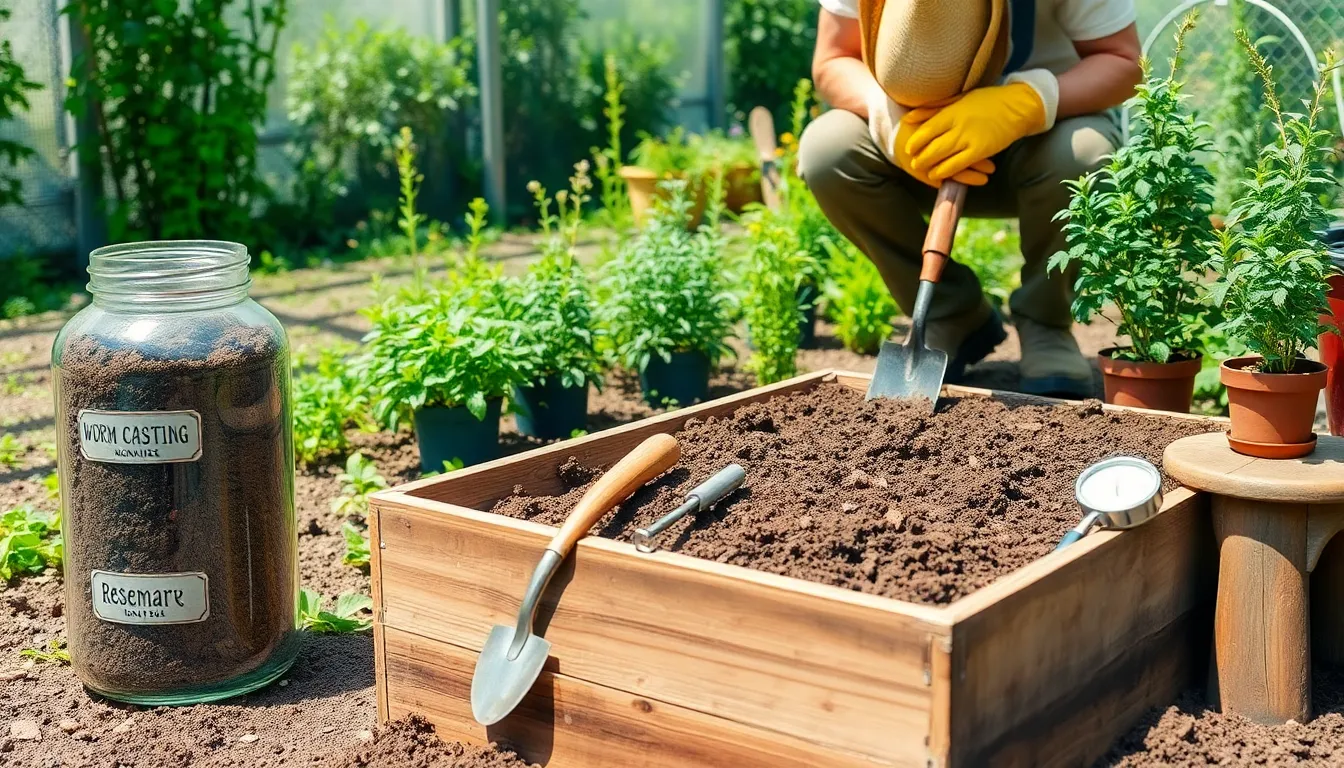Whether you’re just beginning to explore the world of gardening or you’re a seasoned green thumb, preparing your soil is the foundation of any successful planting endeavor. There’s a unique joy in nurturing your plants, and with the right soil preparation, that joy becomes a thriving reality.
This guide, “Tips For Preparing Soil For Planting,” is designed to empower you with the practical skills needed to transform your growing space. From boosting your plants’ health to enhancing your garden’s productivity, these tips will ensure you reap the rewards of a flourishing garden. Dive in with confidence, knowing that the path to a vibrant, bountiful garden begins right beneath your feet!
Test Soil pH and Nutrients
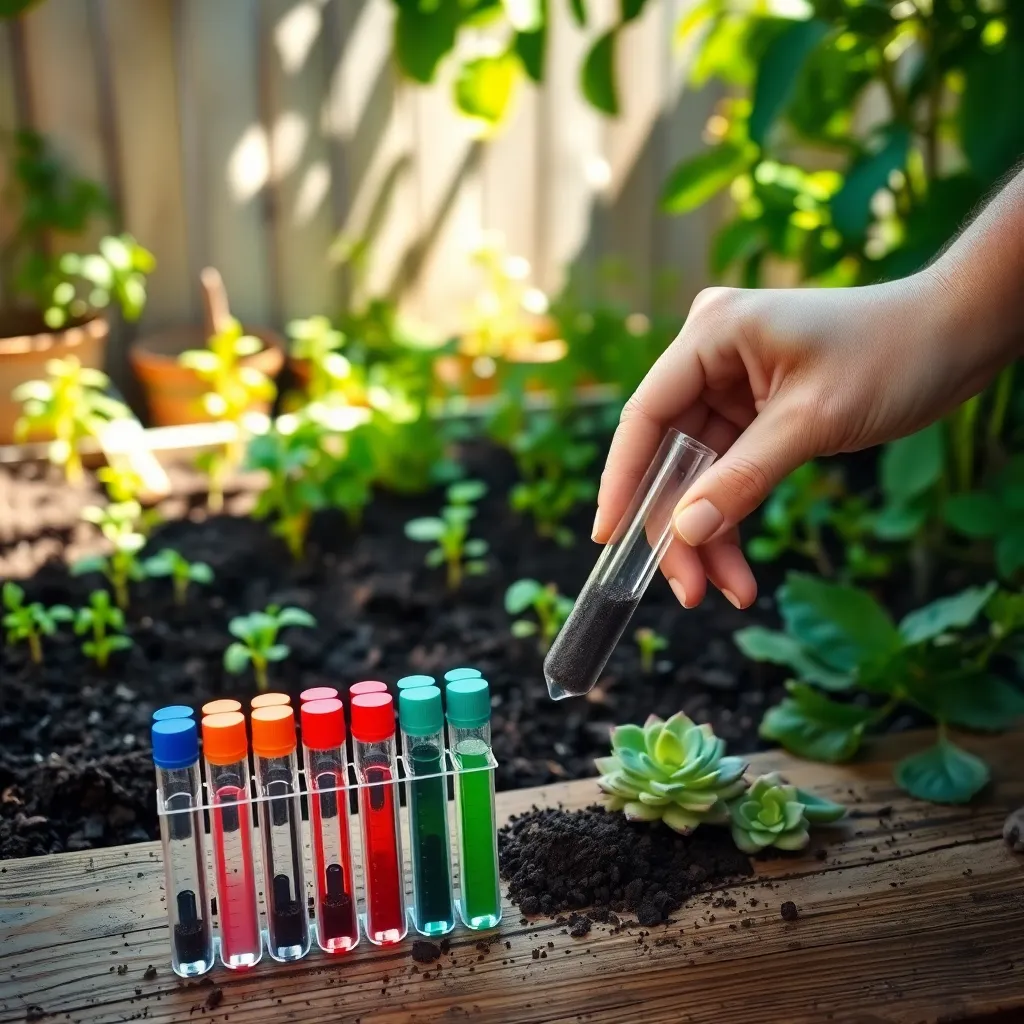
Testing your soil’s pH and nutrient levels is a crucial step in preparing for a successful planting season. Knowing these details helps you choose the right plants and amendments to optimize growth and health.
Start by obtaining a soil testing kit, which can be found at most garden centers or online. Follow the instructions carefully to collect a soil sample from different areas of your garden for the most accurate results.
Once you have your results, you can determine what amendments your soil may need. A soil pH that is too acidic or alkaline can be adjusted with lime or sulfur, respectively, to create a more hospitable environment for your plants.
In addition to pH, consider the nutrient levels in your soil. If your soil test indicates deficiencies, adding specific fertilizers can remedy these issues, providing essential nutrients like nitrogen, phosphorus, and potassium.
For those with more experience, consider the benefits of organic amendments such as compost or well-rotted manure. These not only improve nutrient content but also enhance soil structure and water retention.
Remember, healthy soil is the foundation of a thriving garden. By taking the time to test and amend your soil, you’re setting your plants up for success and abundant growth.
Incorporate Organic Matter Regularly
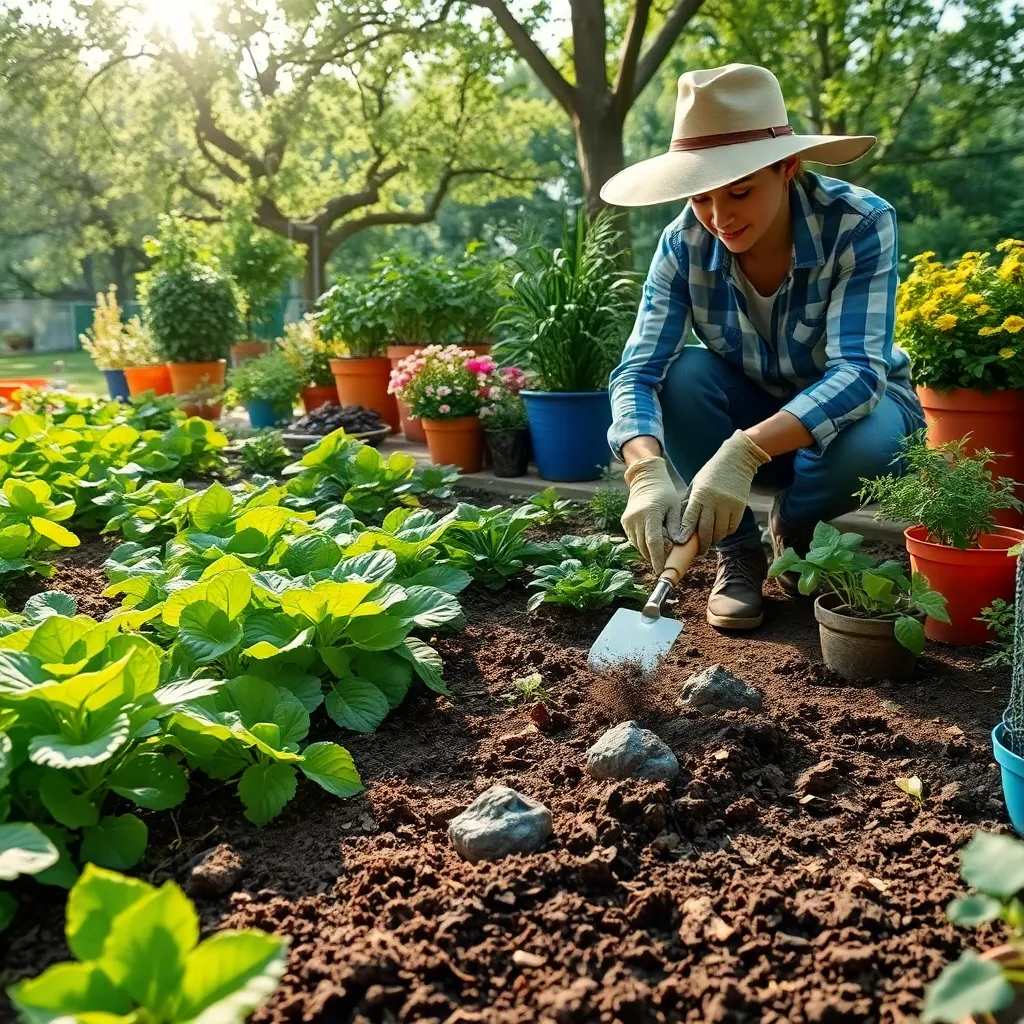
Incorporating organic matter into your soil is essential for fostering a healthy garden environment. Organic matter improves soil structure, enhances nutrient availability, and increases water retention.
You can start by adding compost, which is rich in nutrients and beneficial microorganisms. Spread a 2- to 4-inch layer of compost over your garden beds and work it into the top 6 to 8 inches of soil using a spade or tiller.
Another excellent option is well-aged manure, which provides nitrogen and other nutrients essential for plant growth. Be sure to use manure that has been composted to avoid burning your plants with excess nitrogen.
For gardeners looking to boost their soil further, consider using organic mulches like straw or shredded leaves. These materials break down over time, adding more organic matter to the soil and suppressing weeds.
Loosen Soil with a Garden Fork
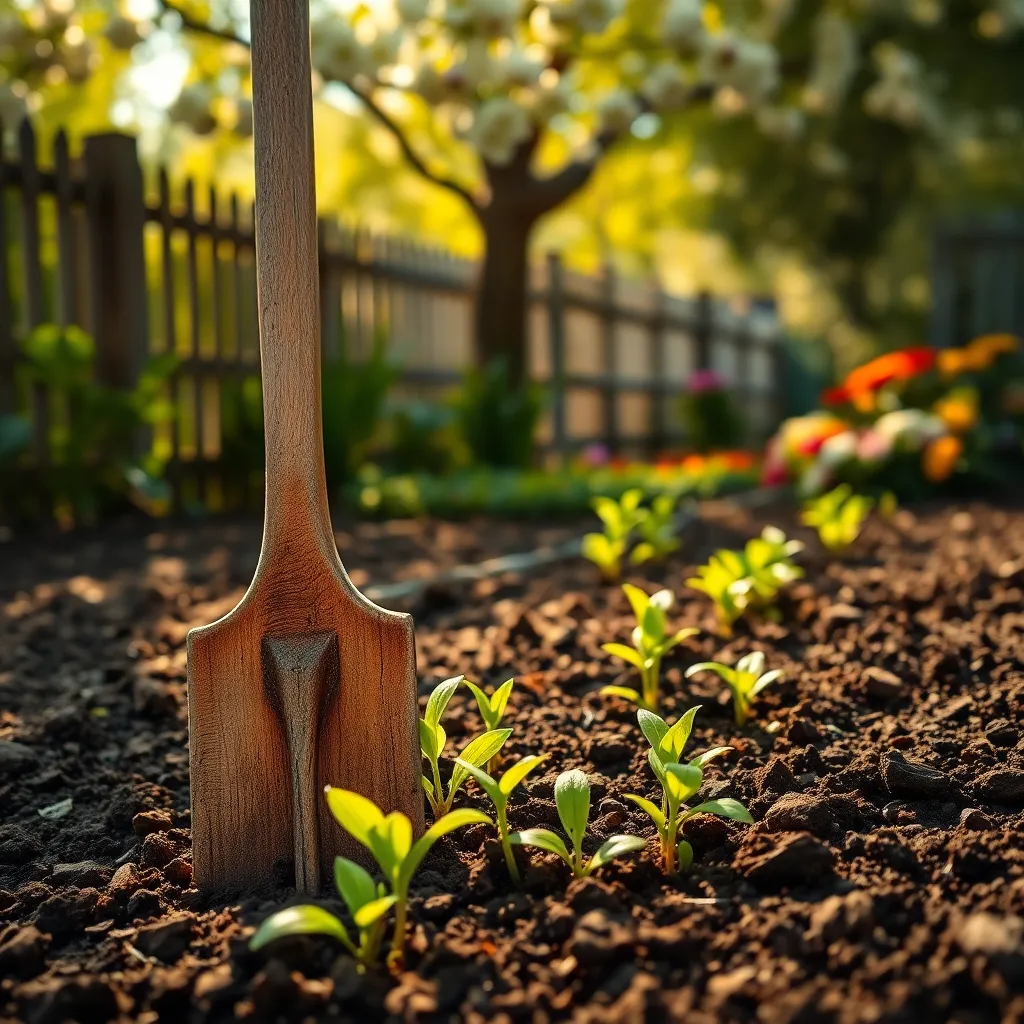
Loosening soil with a garden fork is a vital step in preparing your garden for planting. This process enhances soil aeration, allowing plant roots to access the oxygen they need to thrive.
Begin by inserting the garden fork into the soil about six to eight inches deep, ideally when the soil is slightly moist but not waterlogged. Gently rock the fork back and forth to break up compacted soil, improving water drainage and nutrient absorption.
For gardeners working with clay-heavy soil, this technique is especially beneficial, as clay tends to compact more easily. In contrast, sandy soils may require less frequent loosening but can benefit from the same process to enhance root penetration.
More experienced gardeners might consider double digging, a more intensive method using the garden fork to loosen soil up to twelve inches deep. This technique is particularly useful for root crops like carrots and potatoes, which benefit from deeply loosened soil.
Remove Weeds and Debris Thoroughly
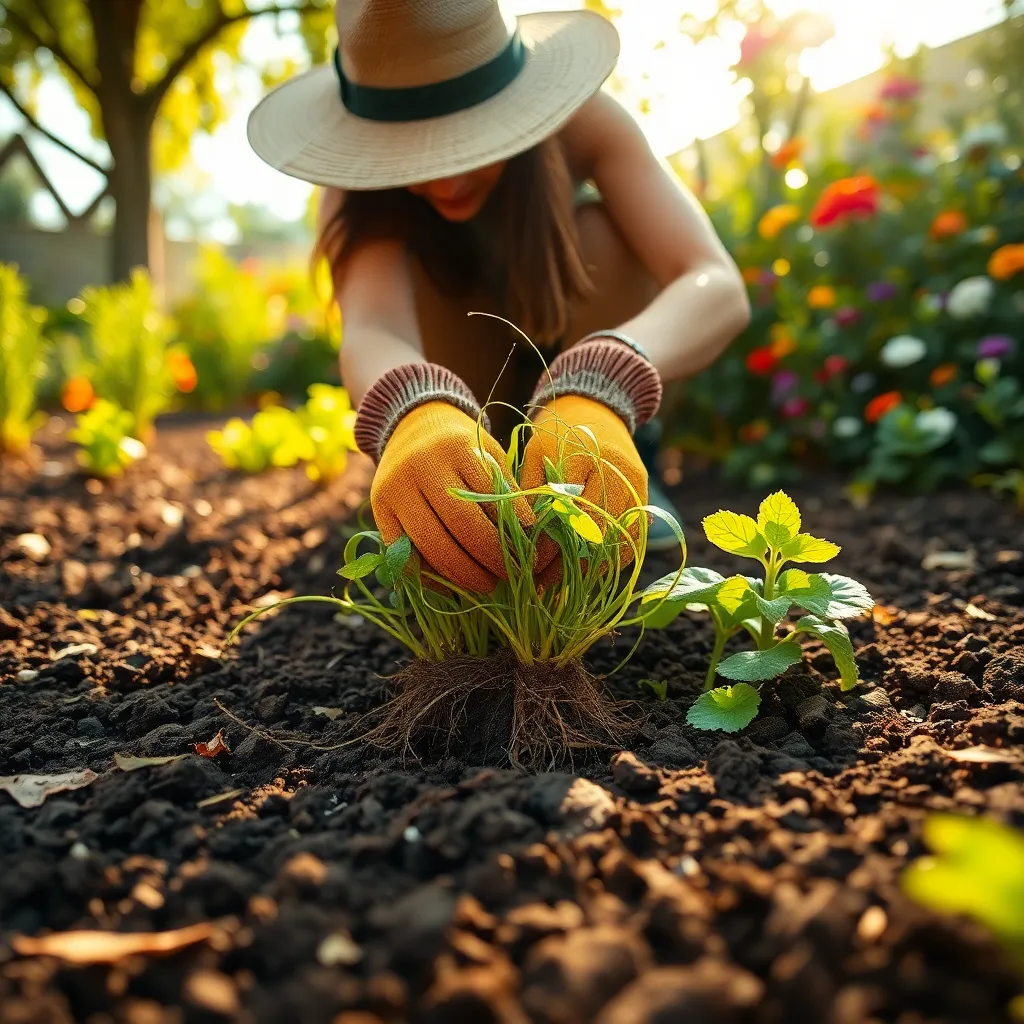
After loosening the soil, it’s crucial to remove weeds and debris thoroughly to prepare for healthy plant growth. This step helps eliminate competition for nutrients and reduces the risk of pests and diseases.
Use a hand trowel or hoe to carefully uproot weeds, ensuring you remove the entire root system. This is particularly important for perennial weeds, which can quickly regrow if any root fragments are left behind.
In addition to weeds, clear away rocks, sticks, and other debris that might hinder plant development. This will create a more uniform soil surface, making it easier for seeds and seedlings to establish.
For larger gardening areas, a garden rake can be very effective in gathering loose debris. Raking also helps to even out the soil surface, creating an ideal environment for planting.
If you’re dealing with a particularly weedy area, consider using a mulch layer after planting to suppress future weed growth. Organic mulches like straw or wood chips are excellent choices, as they also help retain soil moisture and add nutrients as they decompose.
Amend Soil with Compost Wisely
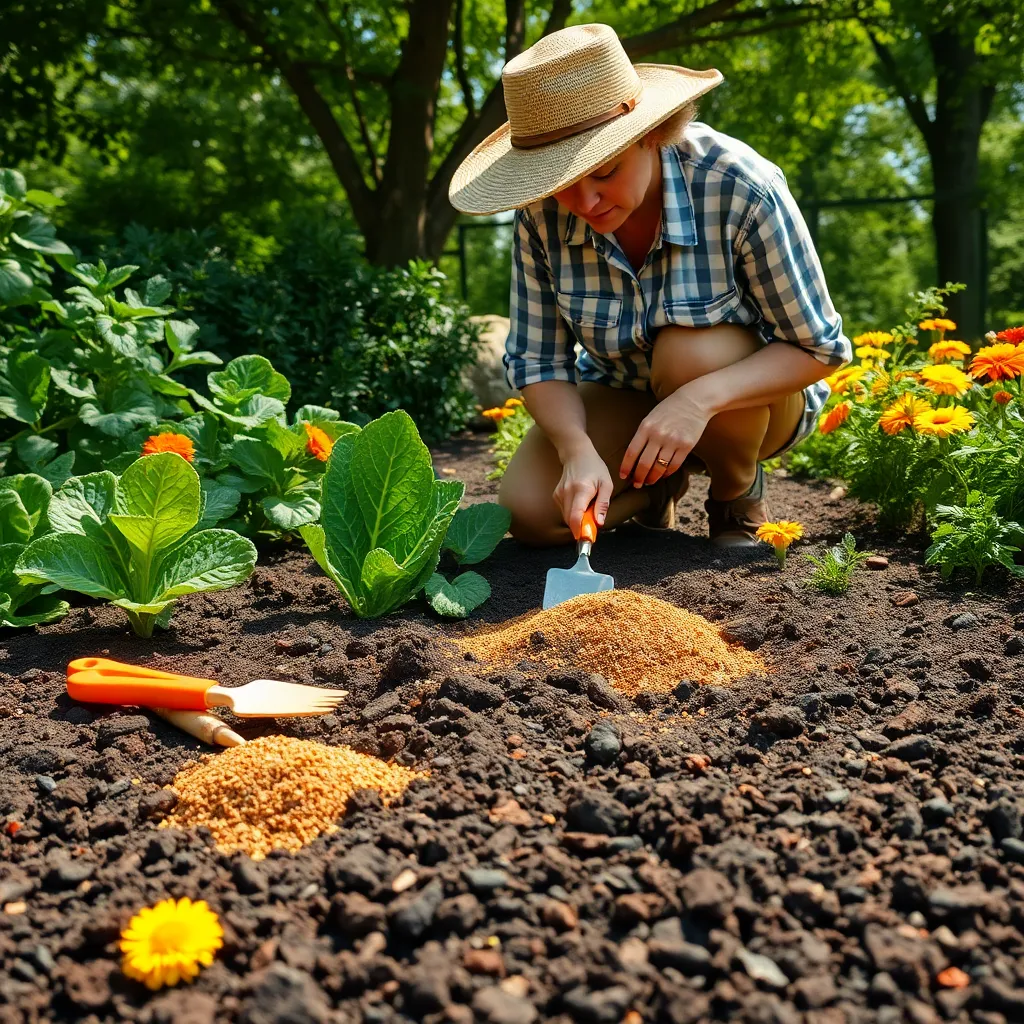
After clearing your garden of weeds and debris, it’s time to enrich your soil with compost. Compost improves soil structure, enhances nutrient content, and boosts the water retention capacity of your garden beds.
Start by choosing the right compost for your soil type, whether it’s sandy, clay, or loamy. For clay soils, compost helps break up compaction, while in sandy soils, it improves moisture retention.
Gently work the compost into the top 6 to 12 inches of soil using a shovel or garden fork. This depth ensures that the roots of your plants will access the nutrients as they grow.
If you’re new to this, aim for a mix ratio of about one part compost to three parts soil. Experienced gardeners might experiment with different ratios based on the specific needs of their plants or the condition of their soil.
For best results, allow the amended soil to settle for a few weeks before planting. This waiting period helps the compost integrate fully with the soil, creating a rich environment for your plants.
Remember, not all compost is created equal. Check that your compost is well-decomposed and free from pathogens and weed seeds for optimal garden health.
Conclusion: Growing Success with These Plants
As we navigate the garden of relationships, preparing the soil is crucial for nurturing deep and lasting connections. First, understanding each other’s needs acts like assessing the soil’s quality, ensuring a healthy foundation. Second, communication is akin to watering—essential for growth. Third, trust-building enriches the soil with nutrients, fostering resilience. Fourth, resolving conflicts is like weeding, removing obstacles that hinder growth. Lastly, supporting each other’s dreams is planting seeds for future blooms.
Now, take a moment to reflect on these insights and choose one area to focus on today. Whether it’s having an open conversation or planning a small act of kindness, even a single step can invigorate your relationship.
Remember, relationships thrive with continuous care and attention. Bookmark this article as a handy reference to revisit these nurturing strategies whenever needed. As you implement these practices, you’ll cultivate a relationship that flourishes with time, setting the stage for a future filled with love and understanding. Embrace the journey, and watch your relationship transform into a vibrant, enduring partnership.

